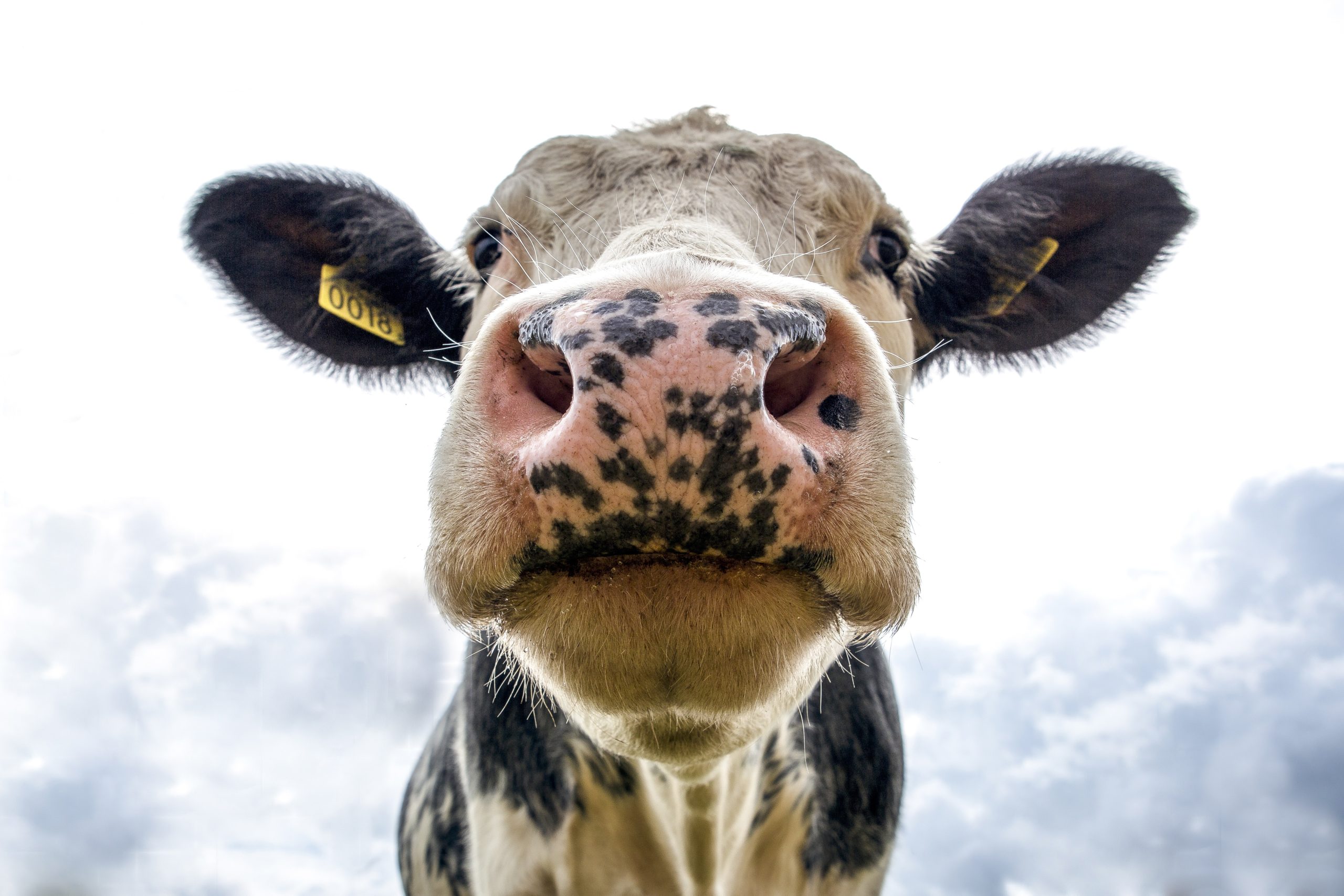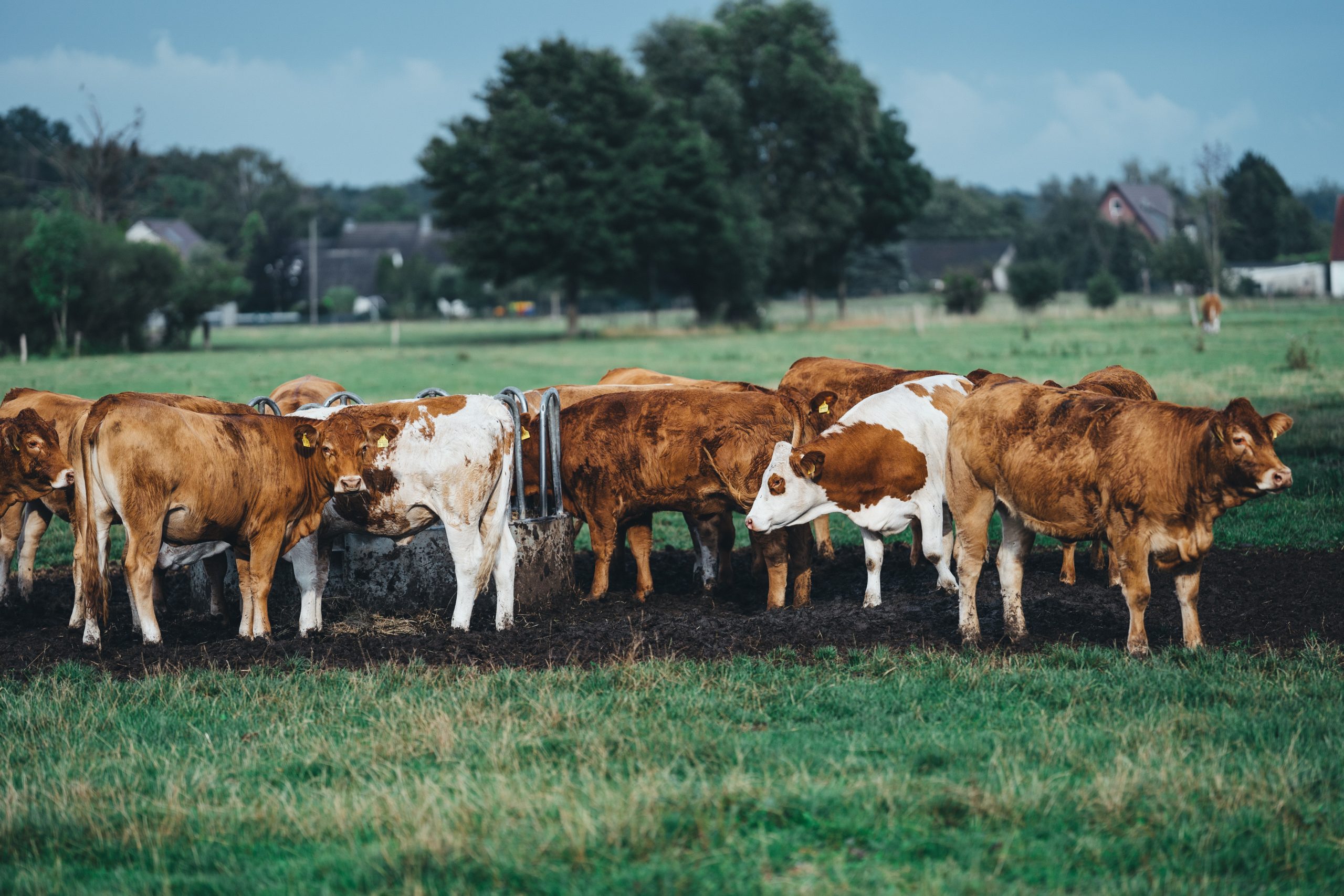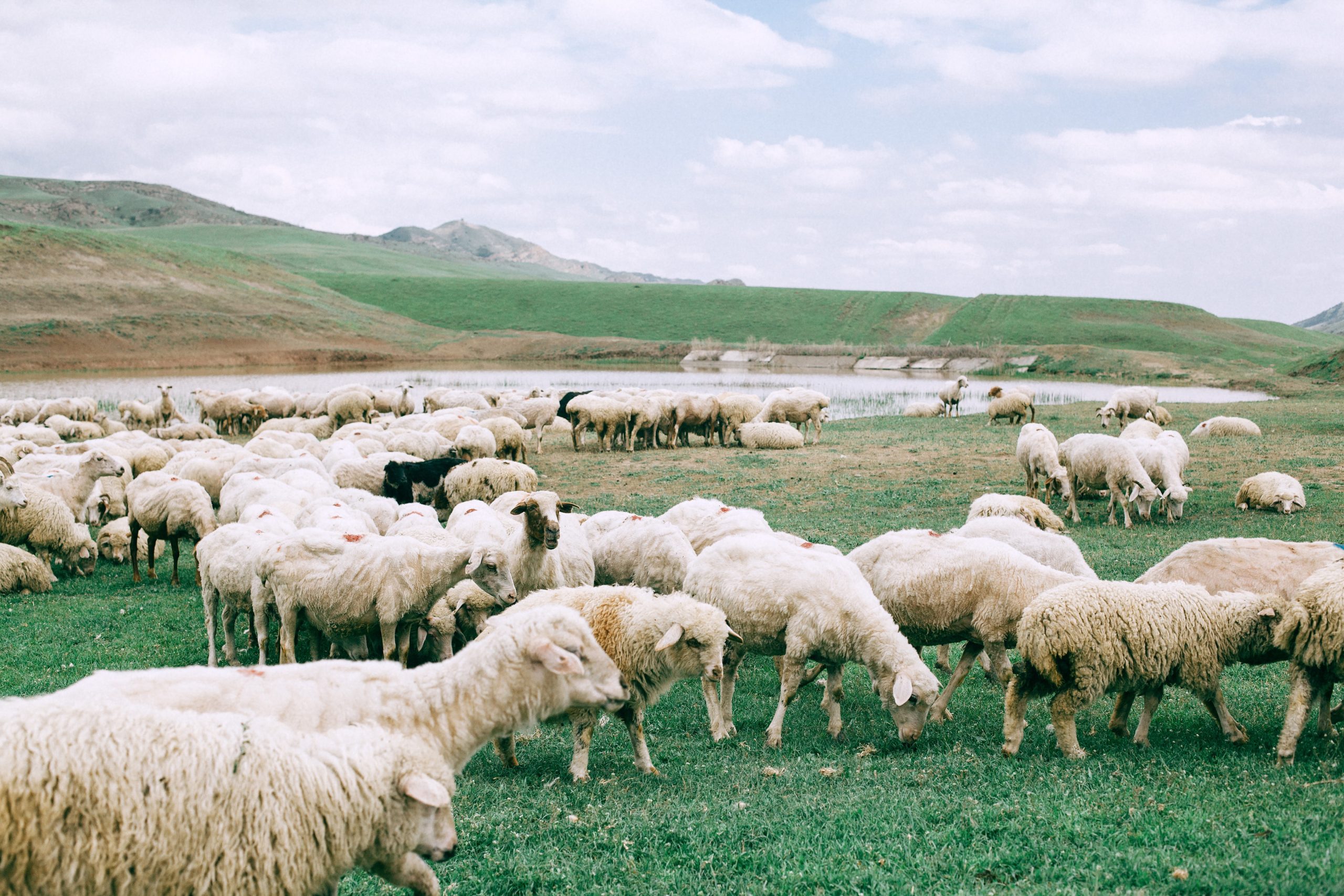Milk fever is a disorder mainly of dairy cows close to calving. It is a metabolic disease caused by a low blood calcium level (hypocalcaemia). Between 3% and 10% of cows in dairying districts are affected each year, with much higher percentages occurring on some properties. Jersey cows that are mature and fat and graze lush, clover dominant pasture before calving are most susceptible.
Losses are due to deaths (about one in 20 affected cows dies), a reduction in the productive lifespan of each affected cow of about three years, and reduction in milk production following each milk fever episode, as well as costs of prevention and treatment.
Signs
In typical cases cows show some initial excitement or agitation and a tremor in muscles of the head and limbs. Then they stagger and go down to a “sitting” position, often with a ‘kink’ in her neck, and finally lie flat on their side before circulatory collapse, coma and death.
A dry muzzle, staring eyes, cold legs and ears, constipation and drowsiness are seen after going down. The heart beat becomes weaker and faster. The body temperature falls below normal, especially in cold, wet, windy weather.
These signs are due mainly to lowered blood calcium levels. Sometimes there are additional signs due to complicating factors. Bloat is common in cows unable to “sit up” because the gas in the rumen is unable to escape. Pneumonia and exposure may affect cows left out in bad weather.
Causes
About 80% of cases occur within one day of calving because milk and colostrum production drain calcium (and other substances) from the blood, and some cows are unable to replace the calcium quickly enough. High producers are more susceptible because the fall in their blood calcium level is greater. Selecting cows for high production may, therefore increase the problem with milk fever. Some individual cow families or breeds (for example, Jerseys) are more susceptible than others.
Age is important. Heifers are rarely affected. Old cows increase in susceptibility up to the fifth or six calving because they produce more milk and are less able to replace blood calcium quickly.
The feeding management of dry cows in the 2 weeks before calving is very important, because it affects both the amount of calcium available to replace blood calcium and the efficiency with which the available calcium can be used.
When the amount of calcium in the diet is greater than is needed, the efficiency of absorbing calcium from the intestine and the efficiency of transferring calcium from the skeleton both become very sluggish and the chance of milk fever is greatly increased.
Also, grazing pastures in Southern Australia winter and spring results in alkaline blood which creates conditions unfavourable for the availability of calcium in the body and predisposes the cow to milk fever. Feeding hay prior to calving and restricting access to green feed results in acidic blood which favours calcium mobilisation from bone and improves calcium absorption from the intestines, both of which are important factors in preventing the occurrence of milk fever.
Fat cows are at a greater risk than thin cows. This is partly because their feed and calcium intake has been higher and partly because fat cows produce more milk at calving time.
Some cows get milk fever several days or even weeks before or after calving. This is usually due to the feed, especially the dietary calcium, being insufficient to meet the heavy demand due to the rapidly growing foetus or milk production in early lactation.
In early lactation, cows should receive as much calcium as possible, and clover-dominant pasture are therefore desirable. They will help to prevent grass tetany as well as milk fever.
Treatment
Treatment should be given as soon as possible. Use 300 ml, or more, of a 40% solution of calcium borogluconate or, preferably, a combined mineral solution such as “three-in-one” or “four-in-one”. Often 600ml may be required.
The combined solutions contain additional ingredients such as magnesium, phosphorus and dextrose (for energy), which may also be at low levels in the blood while cows have milk fever.
Packets of solution together with an injection kit are best kept on hand for emergencies. All equipment should be kept sterile to avoid abscess formation at the site of injection.
Injection of the solution by farmers should be in several places under the skin on the neck or behind the shoulder, unless the cow is in a coma or there are other reasons for desiring a quick response.
Injection into a vein should be left to a veterinarian as it can cause sudden death if not carried out properly. Veterinary assistance is also advisable if there is not a quick response to treatment, because other problems may also be present.
Cows that are “flat out” should be propped up into a normal resting position to relieve bloat. If weather conditions are bad, or the response to treatment is slow, transfer the cows to shelter to prevent exposure and other complications. Provide feed and water. Rugging helps.
Some cows that have been comatosed may have regurgitated and inhaled rumen content into the lungs. If there is ruminal material around the nose one should be suspicious that this may have happened and intensive antibiotic treatment should be commenced as soon as possible as inhalation pneumonia is often fatal.
Recovered cows should not be milked for 24 hours; then the amount of milk taken should be gradually increased over the next 2-3 days.
Prevention
Management of the diet can be a valuable aid preventing milk fever. Cows should be kept on a low calcium diet while they are lactating (dry). This stimulates their calcium regulatory system to keep the blood levels normal by mobilising the body stores of calcium from the bone. When the demand for calcium increases as calving, calcium can be mobilised much more rapidly from bone than the feed, therefore preventing milk fever.
With cows at greater risk – Jersey cows of mature age and in forward to fat condition – green feed should be restricted and plenty of hay fed for at least 1-2 weeks before calving. Neither should contain a high percentage of clover or capeweed.
If it is necessary to improve the body condition of cows in order to improve milking performance, feeds high in energy but low in calcium may be used, for example cereal grain or oaten hay. Cereal grain is also high in phosphorus content, and this is of additional value.
Cows close to calving should be kept in a handy paddock to enable frequent observation and early detection of milk fever. On the point of calving, and afterwards, the available feed and calcium should be unrestricted. Calcium feed supplements may be helpful at this point, but should not be given earlier.
Where dietary management is inadequate, other methods are sometimes used. Vitamin D3 given by injection 2-8 days before calving may be useful. As the calving date is often difficult to predict, repeated treatments are sometimes necessary.
A common treatment used to prevent milk fever is the injection of calcium borogluconate just before or just after calving. Some cows are given more than one treatment. This is quite successful because the calcium provides a reservoir to increase blood calcium just at the time it is needed for milk and colostrum. The danger is that it may not last long enough and milk fever may still occur before the calcium-regulating mechanism of the cow is working efficiently.
Drenching cows with a calcium/magnesium infusion the day before and then twice daily for 1 to 2 days after calving has considerably reduced the incidence of milk fever in some herds where other methods alone have been unsatisfactory. Cows that have required injections to treat milk fever will benefit from the drench to help prevent relapses.
Acknowledgements
This Information Note was originally developed by the Animal Health Bureau, Attwood, and the previous version was published in September 1998.



